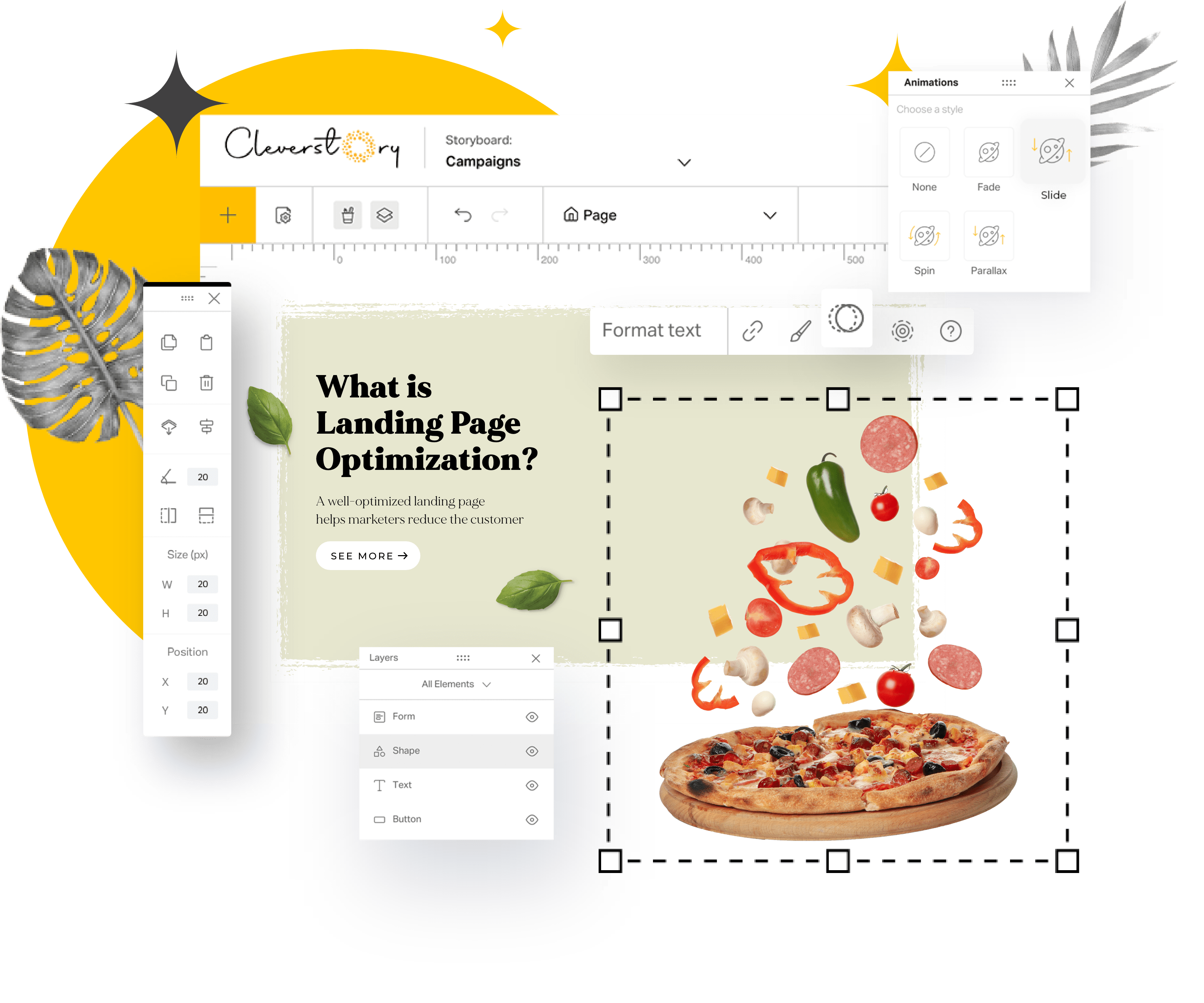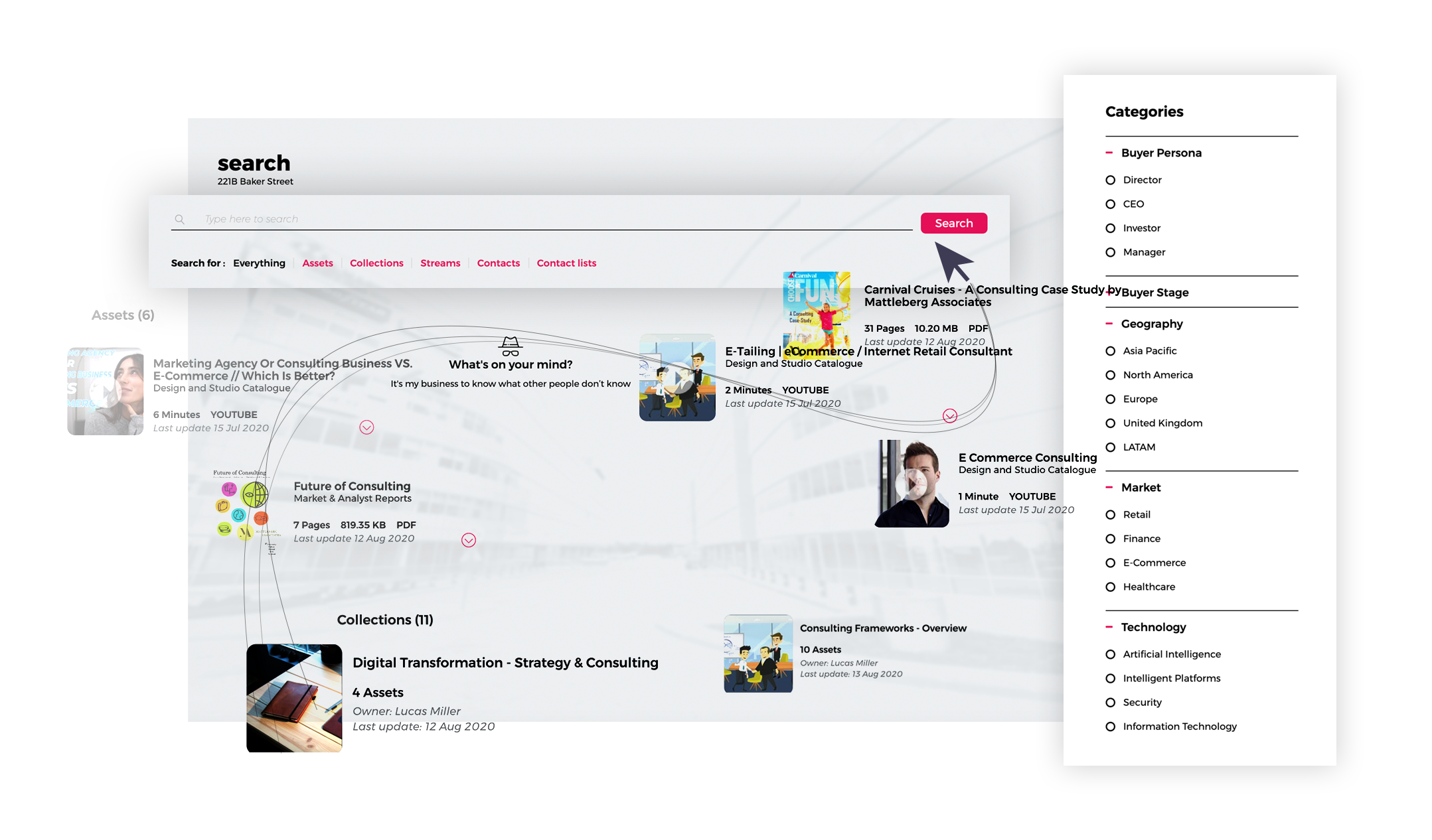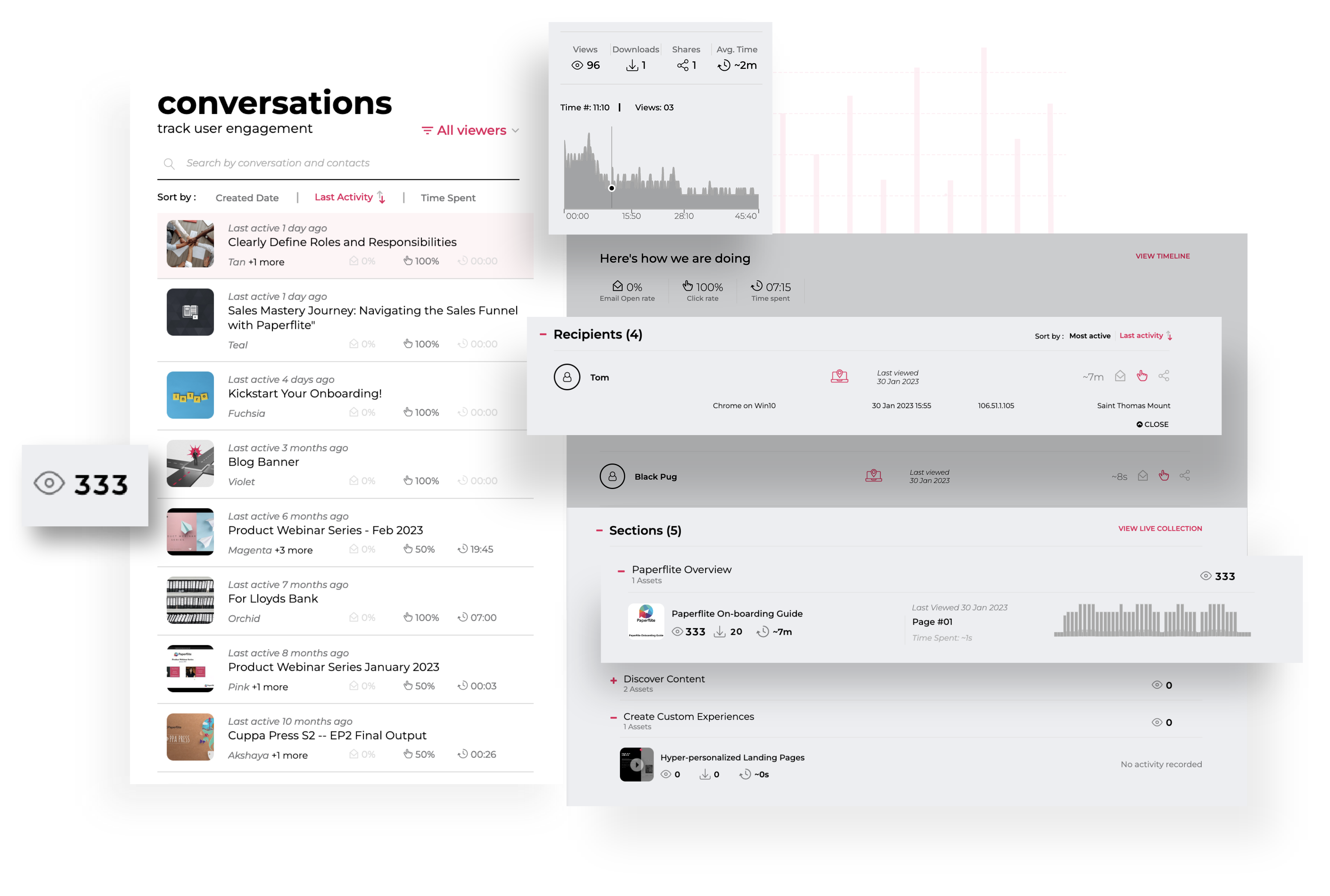7 Strategies to Reduce your B2B Sales Cycle Length
A well-managed sales cycle not only boosts revenue by allowing quicker deal closures but also enhances customer satisfaction by creating a more seamless and responsive buying experience. Lengthy sales cycles, however, can lead to revenue delays, affecting cash flow and growth opportunities as prospects may lose interest, turn to competitors, or see their budgets reallocated.
Additionally, a prolonged cycle can drain resources and reduce operational efficiency, as sales teams spend more time on administrative tasks and stalled deals rather than pursuing new opportunities.
Optimizing sales cycle length is key to overcoming common B2B challenges like stalled deals, inefficient follow-ups, and lengthy decision-making processes. In this blog, we’ll explore actionable strategies to streamline the sales cycle, accelerate deal closures, and maintain a positive customer experience.
You’ll gain insights into the factors influencing sales cycle length, enhance customer satisfaction, and boost team productivity for sustained growth.
What is a sales cycle Length?
Sales cycle length refers to the time prospects take to move through each stage of the sales process—from initial contact to final contract signing. This cycle generally includes stages such as lead generation, qualification, product demonstration, negotiation, and closing.
Managing the length of each stage is crucial, as it impacts how quickly deals progress, influencing revenue timelines, customer satisfaction, and overall sales efficiency.
The length of the sales cycle is measured by how long it takes to move a lead from the initial touchpoint to becoming a paying customer. Sales cycles vary across industries, with B2B sales generally being longer than B2C due to more complex products, higher deal values, and multiple decision-makers involved.
For example, software-as-a-service (SaaS) companies may experience sales cycles of 30 to 120 days or longer.
Why Sales Cycle Length Matters?
The length of the sales cycle impacts more than just individual deals—it affects revenue forecasts, operational efficiency, and customer experience. Here are some key ways in which longer sales cycles cause problems:
- Missed Revenue Targets: Delayed deals mean revenue forecasts are not met, leading to setbacks in business planning and growth.
- Sales Team Fatigue: Reps who spend too much time on a single prospect become less effective, leading to burnout and lost productivity.
- Higher Risk of Lost Deals: Prospects can lose interest or change priorities if the process drags on too long. Competitors may also swoop in with better offers.
- Customer Frustration: A slow buying process can create friction, leaving prospects feeling unsupported or undervalued.
Businesses that focus on shortening their sales cycle enjoy better cash flow, improved conversion rates, and a more motivated sales team.
Factors Influencing Sales Cycle Length
The B2B sales cycle can be positively influenced by factors that improve efficiency and speed up decision-making. Strong sales enablement empowers reps to address buyer needs quickly, while effective lead qualification allows focus on high-potential prospects.
Building trust through personalized outreach and maintaining sales-marketing alignment create a seamless buyer experience, reducing delays. Additionally, timely follow-ups, a clear value proposition, and data-driven insights enable the team to adjust strategies effectively, keeping prospects engaged.
Conversely, certain factors can extend the sales cycle by creating friction. Complex internal processes within the buyer’s organization, misalignment between sales and marketing, and insufficient sales training can lead to delays.
If buyer needs aren’t well understood, interactions may feel generic, slowing progress. Further, ineffective lead nurturing or inconsistent follow-ups can cause prospects to lose interest, lengthening the cycle.
7 Best Strategies to Shorten the Sales Cycle
While there is no universal solution for every organization, there are several proven strategies that have stood the test of time in optimizing every step of the sales cycle in terms of speed and efficiency.
1. Providing Prospects with a Interactive experience:

Current Issue: Sales reps often rely on static, feature-heavy proposals that lack engagement and fail to capture the prospect's interest. Without a compelling, interactive experience in place there is high chances that you might not stand out from your competitors and your value proposal might not be retained by your prospects if what they are presented with, is a 20 page long PDF.
How This Helps: Interactive, tailored proposals create a personalized experience that resonates with the prospect, showcasing how your solution solves their specific pain points. By engaging prospects with content that feels relevant and customized, you facilitate quicker decisions and foster a stronger connection to your product or service.
Implementing: Leverage dynamic proposal tools to personalize your presentation or proposal elements based on the prospect’s brand colors and theme. Include interactive visuals, embedded case studies, and testimonials that are highly relevant to your prospect. Additionally, visualize any data in your presentation, as this makes it more memorable.
Track engagement metrics to see when prospects open and interact with the proposal, providing valuable insight for timely follow-ups.
Effectiveness: Interactive, customized proposals can significantly improve win rates, with studies showing an increase of up to 20% in deal closures. By making proposals more engaging, sales teams can drive faster decisions and boost overall sales performance.
2. Establish a Goal for Each Call
Current Issue: Calls without clear objectives can lead to ambiguous outcomes. Sales reps may find themselves in unproductive conversations discussing irrelevant topics or failing to address key issues that could move the sale forward.
How This Helps: Setting specific goals ensures focused discussions that drive toward actionable results. By defining what you want to achieve during each call—whether it's securing a follow-up meeting or obtaining feedback on a proposal—you create a roadmap for success. It also helps clear any doubts and confusion in specific parts of the process. This solidifies your relationship, trust and communication with the client, leading to more positive outcomes.
Implementation: Prepare an agenda for each call, outlining desired outcomes. Share this agenda with the prospect at the beginning of the conversation to set expectations and keep discussions on track. Maintain minutes of the discussion so you know the action points to work on, and recap with an email summarizing the discussion and next steps.
Effectiveness: Goal-oriented conversations have been linked to higher conversion rates. Research shows that setting clear objectives for calls can improve closing rates by up to 30%.
3. Don't Hesitate to Offer Paid Pilot Programs
Current Issue: Prospects may hesitate due to uncertainty about product effectiveness. They might be concerned about investing time and resources into a solution that may not deliver results.
How This Helps: Paid pilots lower perceived risk, encouraging quicker commitments. By allowing prospects to experience your product firsthand in a low-stakes environment, you build trust and demonstrate value. This will encourage them to come back for further business if they are happy with the outcomes. Successfully completing a paid pilot program can open doors for larger deals and long term contracts. Moreover, they also provide valuable feedback that can be used to improve your process and iron out any problems.
Implementation: Clearly outline the terms and benefits of pilot programs during discussions. Ensure that prospects understand what they will gain from participating in the pilot and how it will help them evaluate your solution effectively. Offer a time-limited, full-featured version of the product for a nominal fee. Position the pilot as an opportunity to test the product’s value in their environment.
Effectiveness: Data indicates that offering pilots can significantly speed up decision-making processes. Companies offering pilot programs report an increase in conversion rates by as much as 25% compared to those who do not.
4. DELIVER A SHORTER SALES CYCLE WITH SALES ENABLEMENT

Current Issue: Without a streamlined sales enablement strategy, prospects often experience delays, inconsistent support, and lack of personalized engagement, leading to prolonged sales cycles. When prospects encounter gaps in communication or feel unsupported, they are more likely to disengage or delay their decision-making.
How This Helps: Implementing sales enablement reduces sales cycle length by ensuring prospects receive timely, relevant information and consistent support. By proactively meeting their needs and addressing concerns early, sales enablement helps build trust and keeps deals moving forward, minimizing delays and unnecessary back-and-forth.
Implementation: Improve the prospect experience by aligning sales, marketing, and support teams to deliver consistent, high-quality interactions. Use sales enablement tools to equip teams with personalized content, follow-up resources, and streamlined communication channels. Prioritize timely responses to inquiries and proactively address potential objections to keep the sales process efficient and engaging.
Effectiveness: Companies that prioritize sales enablement experience faster sales cycles, as organized resources and improved communication significantly reduce decision timelines. Research indicates that effective sales enablement strategies can reduce cycle length by up to 30%, leading to increased revenue and faster time-to-close.
5. Observe Buying Signals

Current Issue: Sales reps often miss cues indicating readiness to buy. This oversight can result in missed opportunities as prospects may be ready to make a decision but do not receive timely follow-ups or encouragement from their sales rep.
How This Helps: Recognizing buying signals allows for timely follow-ups and tailored approaches. By being attuned to verbal and non-verbal cues—such as questions about pricing or requests for more detailed information. Additionally by having a proper content management tool in place you will be notified of how your prospects are interacting with the resources you shared with them the views, shares, downloads, time spent etc, with these information —sales reps can adjust their strategies accordingly.
Implementation: Train reps on identifying and responding to buying signals effectively. Role-playing exercises can help reinforce these skills, allowing reps to practice recognizing signals in real-time scenarios. And with insights on what clicks with your prospect you'd know exactly what to talk about, this will immensely help in taking your prospect to the next stage.
Use CRM tools to track prospect engagement with emails and website content.
Effectiveness: Companies that actively monitor these signals report improved closing rates. Studies show that recognizing buying signals can lead to up to a 40% increase in successful conversions.
6. Utilize Automation to Streamline Processes
Current Issue: Reps spend too much time on administrative tasks rather than selling. Manual data entry, follow-up scheduling, and report generation consume valuable time that could be better spent engaging with prospects. The average SDR spends 21% of their time writing emails, and 17% of their time prospecting and researching leads.
How This Helps: Sales Automation frees up time for relationship-building and engagement with prospects. By automating repetitive tasks such as sending follow-up emails or updating CRM records, sales teams can focus more on strategic selling activities.
Implementation: Implement CRM tools that automate routine tasks such as data entry and follow-ups. Consider using marketing automation platforms that allow for personalized outreach based on prospect behavior.
Automate lead scoring, follow-up emails, and scheduling.
Use chatbots to answer common questions and qualify leads automatically.
Effectiveness: Organizations leveraging automation report significant time savings and increased efficiency in sales processes—often reclaiming up to 30% of their reps' time previously spent on administrative duties.
7. Make the Contract Signing Process Effortless
Current Issue: Cumbersome signing processes can stall deals and frustrate prospects. Lengthy negotiations or complicated paperwork create friction that delays closure.
How This Helps: Simplifying contract signing reduces friction, accelerating deal closure. By making it easy for prospects to review terms and sign contracts digitally, you eliminate barriers that could cause hesitation or second-guessing.
Implementation: Use e-signature tools like DocuSign or Adobe Sign to streamline contract negotiations and make signing convenient for prospects—allowing them flexibility in reviewing documents at their convenience without unnecessary delays. Pre-agree on key terms to eliminate unnecessary negotiations.
Effectiveness: Companies that improve their signing processes often see reduced closing times significantly—some reporting reductions by over 50% when transitioning from traditional paper contracts to electronic signatures.
Finer Tips for Reps to Reduce the Sales Cycle:
In addition to implementing these strategies, here are some finer tips for sales representatives looking to further reduce their sales cycles:
Be Approachable: Cultivate a friendly demeanor that encourages open communication with prospects; this builds rapport quickly. Prioritize building genuine, long lasting relationships with prospects. Be responsive, attentive and go above and beyond to address their needs.
Listen Actively: Pay close attention to prospect needs; adapt your pitch accordingly based on what you hear.
Stay Informed: Keep abreast of industry trends; provide relevant and timely insights during conversations.
Follow Up Strategically: Maintain regular contact without overwhelming prospects; ensure they feel valued throughout their decision-making process while respecting their timeline. Know what other solutions the prospect is considering and position your offering strategically.
Conclusion
Shortening the sales cycle is essential for enhancing revenue growth and operational efficiency within any organization engaged in B2B transactions.
By implementing these strategies effectively—coupled with ongoing training for your team—you can navigate your processes more efficiently while fostering stronger relationships with your clients along the way leading ultimately towards quicker closures resulting in satisfied customers who are more likely to return again in future engagements as well.
Once you've successfully reduced your average sales cycle length through these methods outlined above
* Regularly review sales metrics to identify bottlenecks.
* Keep communication open between teams to ensure alignment.
* Invest in ongoing training to keep reps sharp and processes efficient.
staying ahead of market trends will ensure sustained success long into future endeavors!
